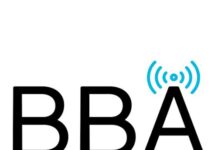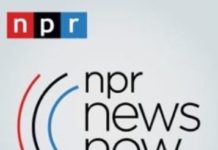
On Thursday Mark Ramsey Media Managing Member Mark Ramsey presented new research to CRS 2020 attendees. The goal of his research was to help PD’s understand their audience better and to bust a few myths about the country radio listener. We caught up with Ramsey, shortly after he made his presentation, to discuss his findings.
Radio Ink: What were the top three takeaways you got from your research?
Mark Ramsey:
1. Country PD’s do not know their audiences well at all. And I’m guessing that’s true of MOST PD’s in all formats. When given many opportunities to guess how their listeners would answer critical questions about their radio usage and wants from their favorite stations, Country PD’s usually guessed wrong. To a degree, we can’t blame them. That’s why projects like this exist – to clear the cobwebs and illuminate the truth.
2. “Radio” isn’t what you think it is. Listeners consider Spotify, Pandora, Apple Music, and Amazon Music to be just as much “radio” as that AM or FM station streaming online. Country PD’s (like most PD’s) see their world from the perspective of the radio tower. Listeners see their world from the perspective of the music they want, wherever it is, whenever and however they can get it. And that is called “radio.” Indeed, this is why people feel they listen to MORE “radio” now, not less.
3. Smartphone are how fans get “radio” today. That’s no longer theoretical and “on the way” – it’s now here. The smartphone, not the smart speaker, is the center of the universe. 18-44 year old Country fans are AS likely or MORE likely to use Smartphones to “often” listen to audio entertainment and information than they are to use “a regular radio or car radio.” The radio industry at large focuses too much on repurposing their over-the-air content on smartphones and not nearly enough at giving people what they want on those devices the way they want it.
Radio Ink: Why are listeners choosing or not choosing radio over digital listening devices?
Mark Ramsey: They choose “radio” because it’s “more convenient and easy in the place I want to listen,” by which they mean the car.
But the number one reason they choose digital service providers over radio is not “specific songs” or “specific playlists” – it’s the exact same reason they choose “radio” – “more convenient and easy in the place I want to listen.” That’s because the “place” they’re talking about is anywhere and the device they listen on is the smartphone.
The conventional heritage advantages of radio – ubiquity, ease of use, habit, free – are no longer a true competitive advantage. That’s not a surprise. These were always diminishing advantages based on history, not trends.
Radio Ink: What do country listeners want more of and why?
Mark Ramsey: They want more things related to music – more music, more variety, more songs of every Country flavor, including Pop Country and Cross-Format Collaborations. They don’t want more local, more service elements, more contests, or more of the average on-air talents they hear today.
Radio Ink: How do listeners feel about fewer female artists being played on radio
Mark Ramsey: The question we asked was whether they’d prefer a mix that skews in a more Male artist direction, a more Female artist direction, or a “good mix” of both – or don’t they even care. The answer was that they preferred a “good mix” or they didn’t care. What a “good mix” is is in the ear of the beholder.
They specifically said they would NOT prefer “a mix that includes more songs by Female artists” just as they said they would NOT prefer “a mix that includes more songs by Male artists.”
The data indicates this is a fabricated controversy of more concern to the powers-that-be in the music industry and in headline-seekers than to the audience listening to Country radio.
If you’re asking my opinion on the controversy I’ll give it to you. Listeners are tuning in for hits, not gender. Great songs, not songs by men or women. Should Country stations program the best songs they can possibly find by male and female artists? Yes. Should they erect a quota system that artificially mixes in mediocre songs with great ones, by men or by women? No. Do I believe that Country stations generally should take more risks with more songs by established and new artists, both male and female? Within constraints, yes. Do I believe that “playing more music by female artists” will lead to more listening to Country radio? Absolutely positively not. Not unless those songs are better than the ones they replace.
As far as I know, while audits have shown that the composition of female artist-led titles on Country radio is lower than for male-led titles, nobody has ever shown that listeners feel there are “not enough songs by women” on Country radio. I would challenge someone to ask that research question and also ask the same question about songs by men. Let’s see what happens. But also make sure to ask this question: “Are there not enough GREAT songs on Country radio by men or women”?
Radio Ink: What can country PD’s take back home, from your research, and make the format stronger?
Mark Ramsey: All of that is a start. Along with an openness for Pop Country and even Cross-format collaborations. The key will be to legitimize songs that contain pop artists by anchoring and showcasing the presence of Country artists in those collaborations.
Reach out to Mark Ramsey by e-mail at [email protected]






“Listeners are tuning in for hits, not gender.”
Exactly. Why is this so hard to understand? Motown discovered this when they released “Heard It From The Grapevine” by both Marvin Gaye and Gladys Knight. They each were huge hits. Then CCR released it, and it became a hit for a group. A hit song is a hit song.
Great work from a pretty good researcher. I believe that his point about “radio” providing more of what listeners want is crucial to continued broadcast success and brand excellence regardless of genre (isn’t this a better word than “format”?). Mark would tell you that your broadcast (AM/FM) is the megaphone to drive your listener to other related content (website, app). Back in the day the AOR stations’ fans were living the lifestyle of a rock ‘n roller. These days any station can do the same if they stop treating websites and apps as an afterthought. A well designed all-inclusive strategy can achieve a goal of making a station’s brand important to the listener. When you can determine why people listen to your station you can over deliver on what they really like-and win the top-of-mind branding war. After all, you can’t win in PPM if your listener doesn’t care that you exist. Mark’s apparent goal here is to make them care.